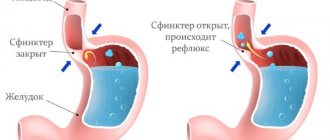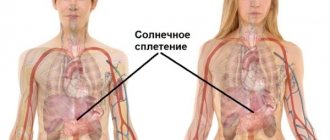- Etiology
- Symptoms
- Diagnostics
- Treatment
- Prevention
Burning in the legs is a nonspecific symptom that can be a manifestation of a certain pathological process (not always in the musculoskeletal system), or be a consequence of excessive physical, static load or mechanical damage. Only a doctor can determine the exact cause of the feeling of heaviness after conducting the necessary examination. Self-medication, including folk remedies, is unacceptable.
Who is at risk?
The legs are burning with fire (the reasons for this physiological phenomenon are completely varied) - this is a pathological symptom that may not be associated with dysfunction of the lower extremities.
The following groups of people are most susceptible to this pathological symptom:
- pregnant women;
- allergy sufferers;
- people whose work involves constant movement;
- people with pathologies of the musculoskeletal system;
- people with hormonal imbalances;
- people with excess body weight;
- elderly people;
- being under stress for a long time.
Heat in the legs is felt in the area of the steps, calves. The person experiences discomfort and burning in the lower extremities. This symptom may be a manifestation of a serious illness.
Which specialist should I contact?
There can be many reasons for this physiological phenomenon. At the first manifestations that are not associated with overwork, it is necessary to contact specialists for timely help.
If you experience discomfort in your feet, you should consult a local therapist at the clinic. An experienced doctor can identify the exact cause of this phenomenon and refer for further help.
The local GP can refer the patient to:
- vascular surgeon;
- rheumatologist;
- traumatologist;
- orthopedist
If the burning sensation in the legs is associated with age-related changes in the body, then you need to consult a surgeon or endocrinologist.
When your legs and feet suffer
The best prevention of unpleasant pain and sensations in the feet is wearing comfortable shoes and regular hygiene care. Every day, experts recommend doing special baths, contrasting dousing with water.
If, after visiting a specialist, it was determined that the unpleasant symptoms were caused by a disease, then it is important to treat its root cause:
- for vascular diseases - start taking venotonics, non-steroidal anti-inflammatory drugs, wear compression garments;
- in the presence of allergies, take desensitizing agents for local and systemic effects;
- infection - anti-inflammatory, antibacterial and antifungal medications; these medications should be taken strictly after consultation with a doctor.
The main reasons why legs burn
Legs are burning with fire (the reasons for this physiological phenomenon are quite varied) - this is a fairly popular symptom. There are several types of reasons for this process. These include external (or external) and internal.
External causes are associated with environmental influences, clothing or uncomfortable shoes.
Internal reasons include:
- skin damage;
- pathologies of the vascular system;
- avitaminosis;
- diseases of the endocrine system;
- hormonal imbalance;
- problems with the human nervous system;
- pathologies associated with disruption of the human musculoskeletal system.
Leg pain can be associated with pregnancy or age.
Special manifestations of discomfort
Many patients complain of a burning sensation throughout the head. Less commonly, the burning sensation manifests itself in the form of itching inside the head, which can be compared to the feeling of sitting for a long time under the scorching sun.
This itchy pain may be accompanied by monotonous, slightly throbbing pain inside the head, rapid pulse, high blood pressure and other symptoms.
If it is the scalp that is bothering the burning sensation – this is due to exposure to allergens, then you need to refuse to eat food to which you are allergic or try to avoid sources that cause an allergic reaction. Severe heat in the head can also manifest itself in the form of attacks.
But pain in the head, similar to tingling with needles, may indicate not only overwork of the body, but also the presence of serious illnesses.
What diseases cause burning feet?
The reasons for this physiological phenomenon are quite extensive and varied. This is a common problem that may prompt you to seek medical help.
Diseases that cause burning feet:
Diabetic foot causes burning of feet and legs
| Cause | A disease in which the feet burn | Description of this pathology |
| Pathology of the human nervous system | Peripheral neuropathy | Multiple damage to the peripheral nerves, which manifests itself through peripheral paralysis, sensory disturbances and vegetative-vascular disorders in the lower extremities. The list of symptoms of this disease includes not only a burning sensation in the lower extremities, but also numbness, muscle weakness, and severe pain. |
| Joint diseases | Obliterating endarteritis | A chronic vascular disease that gradually affects the arteries of the legs. The result of this disease can be gangrene. |
| Atherosclerosis | Chronic disease of the arteries of the elastic and muscular-elastic type, which occurs as a result of disorders of lipid and protein metabolism. This disease is accompanied by the accumulation of lipids, followed by the proliferation of connective tissue fibers in the vascular wall. The cause of this disease is considered to be poor nutrition and poor lifestyle. Symptoms of atherosclerosis include not only a burning sensation in the lower extremities, but also fatigue and deterioration in appearance. Xanthomas (yellow or yellow-brown plaques, which are caused by high cholesterol levels in the body) form on the veins and elbow bends. The disease may not appear for many years. | |
| Neoplasms | Brain tumors | A heterogeneous group of various neoplasms that can be either benign or malignant. These tumors arise after the start of the process of uncontrolled cell division. Intracranial neoplasms affect nearby tissues, nerves, membranes, blood vessels, and endocrine structures of the brain. The cause of this disease can be concussions, stroke and other pathologies. The danger of brain tumors lies in the possibility of confusing them with other diseases of various body systems. The first signs and symptoms of a brain tumor are pain, nausea, fatigue, and drowsiness. |
| Spinal cord tumors | A neoplasm of a benign or malignant nature, which is localized in the spinal space or membranes, the substance of the spinal cord. This pathological neoplasm poses a danger to humans because it manifests itself only in the last stages of development. It is possible to detect a cancerous tumor of the spinal cord in the early stages only when carrying out diagnostic measures related to other diseases or pathologies of the body. A spinal cord tumor is characterized by persistent radicular pain in the occipital region and limited mobility in the cervical spine. Symptoms of this pathology also include burning in the legs, headache, fatigue, drowsiness, and respiratory distress. | |
| Poor nutrition, poor quality products | Avitaminosis | A disease that is a consequence of poor nutrition. In the process of absorbing junk food (or food that does not contain enough beneficial vitamins and minerals), the body does not receive the necessary elements. A more common disease is polyavitaminosis (the body lacks several vitamins at the same time). Vitamin deficiency manifests itself as constant fatigue and drowsiness, headaches, deterioration in the quality of skin, nails, teeth, hair, burning in the legs, and water retention in the body. |
| Allergy | An immunopathological process that is characterized by the hypersensitivity of the body's immune system upon repeated exposure to an allergen on a damaged part of the body. A burning sensation in the feet during an allergic process can occur when using low-quality shoes, clothing, and hosiery. Due to low-quality fabrics or allergenic material, an allergy can manifest itself not only as a burning sensation in the legs, but also by the appearance of redness, pain, and itching. | |
| Endocrine diseases | Diabetes | A group of endocrine diseases that are associated with impaired glucose uptake and, as a consequence of this disease, interaction with target cells. There are several types of diabetes mellitus. The symptoms of this disease depend on the classification of the pathology. The most common and pronounced symptoms are increased appetite, weight loss, constant fatigue and drowsiness, thirst, the urge to urinate, and a burning sensation in the lower extremities. |
| Cardiovascular diseases | Thrombophlebitis | Thrombosis with inflammation of the vein wall, the formation of a blood clot that closes its lumen. Initially, the disease affects the saphenous veins, but in the absence of proper treatment it spreads to deeper ones. This disease of the circulatory system is fraught with dangerous consequences. If a burning sensation appears in the lower girdle of the limbs, a sharp deterioration in the general condition, a change in the structure of the saphenous veins, pain and density of the veins, it is necessary to seek medical help. |
| Vegetovascular dystonia | A complex of functional disorders with dysregulation of vascular tone of the autonomic nervous system. Common symptoms of this disease include paroxysmal palpitations, increased sweating, severe headaches, and pain in the heart area. There may be redness or paleness of the face, fainting and fever in the legs. With vegetative-vascular dystonia, almost all human organs require medical observation and treatment. | |
| Systemic diseases | Venous dilatation of veins | A systemic disease that affects blood vessels. With varicose veins, not only dilation, but also deformation of blood vessels is possible. The disease is progressive in nature and is classified depending on the stage, location, and manifestation of various complications. Symptoms of venous dilatation include not only a burning sensation in the lower extremities, but also a noticeable deterioration in the condition of the veins, which can be determined by visual examination. |
| Gout | A metabolic disease characterized by the deposition of urate crystals in various tissues of the body. Gout is one of the most famous diseases. Since ancient times, the pathology has also been called the disease of kings. Gout is most dangerous because it provokes an exacerbation of hypertension and diabetes. The accumulation of uric acid salts occurs mainly in the joints. Symptoms of this disease are a burning sensation in the lower extremities, acutely developing arthritis, acute pain, swelling and redness. | |
| Diseases of the musculoskeletal system | Heel spur | A disease that is associated with permanent injury to the plantar ligament area. When constant stress is placed on this ligament, which connects the heel bone area to the forefoot, plantar fasciitis occurs. As a result of constant impact on the area of the heel bone, an outgrowth (osteophyte) is formed, which, in fact, is a heel spur. Plantar fasciitis is characterized not only by a burning sensation in the area of the feet (legs), but also by pain and an unpleasant appearance. |
| Flat feet | A change in the shape of the foot, which is characterized by drooping of its longitudinal and transverse arches. Flat feet come in 3 forms, and a combination of several is possible. Flat feet lead to painful changes in the spine and pathologies of the musculoskeletal system. With flat feet, there is pain in the lower extremities and a burning sensation. The most pronounced sign of change in the musculoskeletal system is a direct transformation in the appearance of the foot. |
Plantar fasciitis of the foot causes heel spurs.
At the first manifestations of various diseases that are associated with a burning sensation in the legs, it is necessary to seek medical help.
Causes not related to diseases
The legs burn with fire (the causes of this phenomenon are sometimes not related to pathological changes in the body) - this is a sign of a harmful effect on the lower extremities.
Reasons that are not related to diseases include:
- Uncomfortable, constricting shoes. The burning sensation in the legs is associated with pressure on the blood flow, as a result of which, after removing shoes, blood flows into the vessels, providing the limbs with heat.
- Dehydration of the body. Sudden dehydration may cause burning, tingling and cramping sensations. When dehydrated, the body loses not only essential fluids, but also minerals.
- Freezing feet. A burning sensation in the lower extremities when the legs freeze is associated with a sharp narrowing and expansion of blood vessels. When your feet freeze, you may experience tingling in the lower extremities, burning, numbness and severe pain.
- Injuries of the lower extremities. With mechanical damage, the integrity of the nerve or blood vessels can be disrupted, which causes numbness and tingling in the legs.
- Smoking. An unpleasant sensation in the lower extremities is associated with a lack of oxygen, which causes impaired blood flow.
For physiological causes of tingling in the legs, medical intervention is not required (in most cases). The burning sensation in the area of the feet (due to these reasons) goes away quite quickly.
Traditional treatment
Traditional medicine is recommended to be used to eliminate symptoms of more serious diseases. At the first manifestations of pathology of the cardiovascular, musculoskeletal, nervous and other systems, it is necessary to seek qualified medical help. Traditional medicine is used only as an auxiliary means of treatment.
To get rid of unpleasant sensations, you can use the following recipes:
- Blue clay. The clay is diluted with water and applied to the foot, and covered with a film on top. The product must be worn for about 2-3 hours, then rinsed off with cold water.
- Ammonia and sunflower oil must be mixed. You need to wipe painful areas with this mixture.
- Baths with the addition of linden blossom, chamomile, salts and calendula help relieve swelling, burning in the legs and pain.
- Lemon juice. To eliminate uncomfortable sensations in the lower extremities, you need to use fresh lemon juice.
- Feet can be treated with cabbage leaves. First you need to boil the cabbage leaves until softened, and then iron them. The resulting compress must be applied to the feet for several hours.
If the burning sensation in the leg area persists for a long time, you can use traditional methods, alternating them with each other.
Edema
The swelling may appear directly at the site of the blood clot or spread to the entire lower limb. Swelling indicates an exacerbation of problems with blood vessels. The swollen skin is very dense to the touch; when you press on the affected area, no traces are left. One leg or both may swell. The extent of the tumor depends on the location of the vein blockage. With thrombosis of superficial vessels, the legs swell, while in deep vessels, swelling spreads to the thigh.
- 5 ideas to help overcome stress
- 5 fines you can get for using a gas stove
- How convenient are the mobile applications of Magnit, Perekrestok, and Pyaterochka?
Massage
Feet can burn with fire in the lower extremities at different ages. You can eliminate the sensation with massage. To carry out medical manipulations, you can use various cooling (or painkillers) gels and ointments, and essential oils.
These products must be applied to the palms and soles of the feet, then rub the components into the feet with massaging movements. Particularly painful areas need to be carefully treated.
When massaging, it is necessary to work well on the area of the toes and heels. Use your fingers to knead and stroke the painful areas. There are also contraindications for massage. Before you start using this procedure, you need to consult with a specialist and review courses on proper foot massage.
To make your foot massage more effective, you can use a combined contrast bath or a foot bath with massage (device). During contrast baths, the water is often changed, also changing the temperature of the liquid. During the procedure, you do not need to use ice-cold or very hot water - the process should be comfortable.
Powder and antiperspirant
You can use baby powder with an antiseptic effect. Apply the product to clean and dry skin. During active sweating, the powder absorbs excess moisture and rolls into clumps, leaving the skin dry and slippery. The effect of the powder continues until all the powder has absorbed moisture. For people living in different climatic zones, the effect of such a remedy will last differently.
The main difference between an antiperspirant and a deodorant is that it affects sweat, not odor. To apply the product between the legs, it is best to use aerosol antiperspirants. The aerosol should be applied to the skin in a thin layer, and should be given only a couple of seconds to dry. Antiperspirants with a powder effect perform their task best. After drying, they turn into a thin dry layer, with the help of which the friction between the legs is significantly reduced.
Drug therapy
To eliminate discomfort in the legs, use:
- Ibuprofen;
- Paracetamol;
- Tramadol.
These drugs are aimed at relieving leg pain. To eliminate the specific cause of this manifestation, it is necessary to consult a specialist.
Depending on the cause of the burning sensation in the lower extremities, the following may be prescribed:
- homeopathic medicines;
- drugs aimed at treating heart failure;
- medicines for the treatment of blood diseases;
- medicines for the treatment of oncology.
The dosage and course of treatment are prescribed directly by a specialist (depending on age and severity of the disease).
The specialist may also prescribe additional medications that are aimed at eliminating other symptoms of the disease. Such medications include vitamins, painkillers, relaxing gels and ointments that contain menthol (has a cooling effect and affects blood flow).
In order not to experience discomfort in the legs, it is necessary to take preventive measures. To prevent your lower limbs from burning with fire, you need to perform a daily foot massage, choose the right shoes, maintain a healthy lifestyle, and also undergo a medical examination for various diseases that can cause this physiological phenomenon.
Diagnostics
First of all, a physical examination of the patient is carried out, with the collection of a general history and current clinical picture. During the initial examination, the doctor must determine how long ago the symptoms began, under what circumstances, and whether additional signs are present. If the patient has taken any medications to eliminate burning, the doctor should be notified about this before starting diagnostic procedures.
To accurately make a diagnosis, the following laboratory and instrumental examination methods can be used:
Ultrasound procedure
- general blood and urine examination;
- detailed biochemical blood test;
- blood sugar test;
- neurological examination;
- radiography;
- Ultrasound of internal organs;
- angiography with contrast agent;
- CT;
- MRI.
Diagnostics may include other research methods, depending on the current clinical picture. Based on the results of the study, the doctor can find out the provoking factor and select the optimal treatment.










